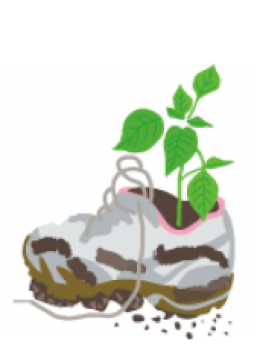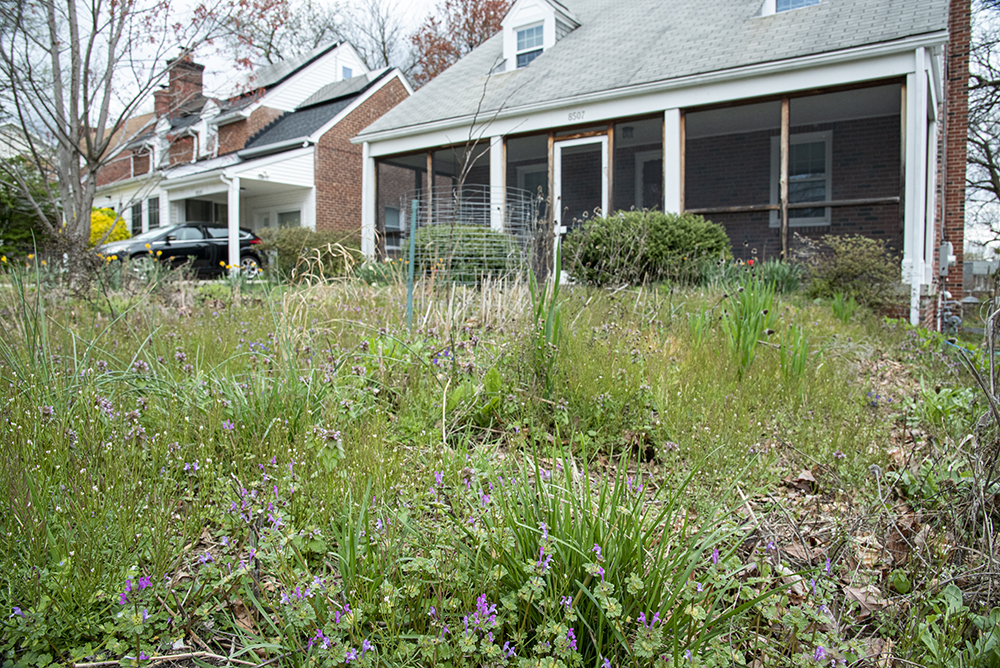In a matter of a few weeks, I’ve suddenly gone from food security to food scarcity. As I’ve been frantically running around planting food-for-me seeds and fighting with all kinds of fencing to keep out all the cute plant eating friends, it occurred to me there were a good deal of plants coming up everywhere. Plants I hadn’t really thought might actually be edible.
And after doing some research, lo and behold, I realized I was surrounded with food and medicine. So after I finished all my food-for-me planting, I ran out and began taking pictures and nibbling on this and that until my mouth was filled with a strange but wonderful taste that is hard to describe. It was like I was eating spring.
Here’s what I’ve found.

Hairy Bittercress (Cardamine hirsuta)
The leaves and stems of this plant are delicious in salads and high in vitamin C.
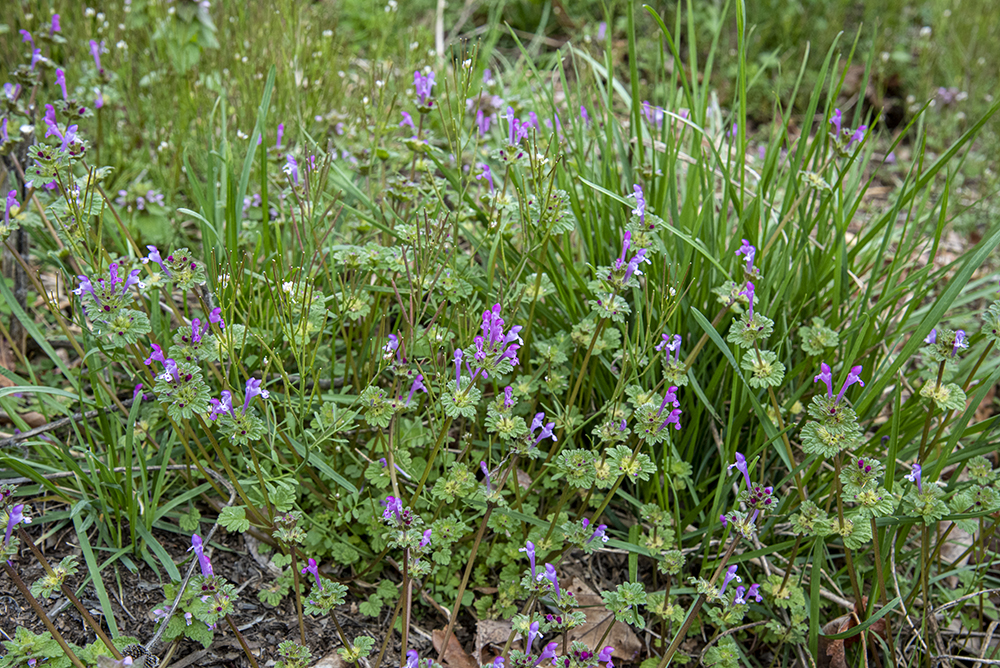
Henbit (Lamium amplexicaule)
The leaves, stem and flowers of this plant in the mint family are edible and can be eaten raw, cooked or used for tea. It is high in iron, vitamins and fibre. It grows in drier areas which explains why it’s growing in the higher garden in front versus that lower one in back.
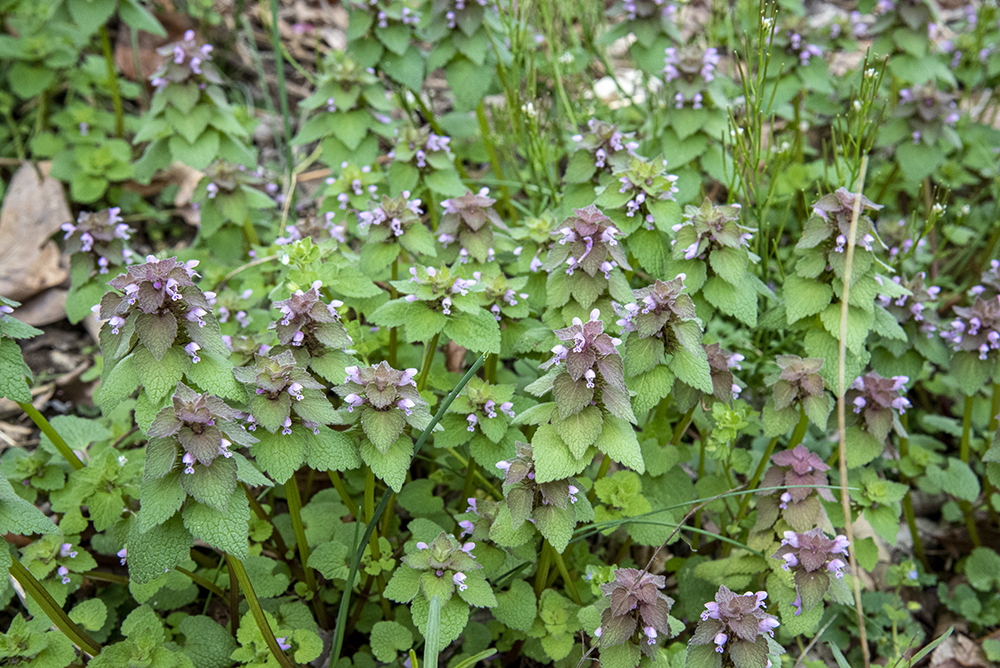
Purple deadnettle (Lamium purpureum)
Also in the mint family, only the leaves are edible on this plant which can be eaten raw or cooked. When used for tea, it can help reduce chills and cleanse the kidneys.

Speedwell (Veronica hederifolia or persica)
This plant is edible but bitter and is best used in tea which helps with excess mucous, sore throat and eyes and bad skin.

Common blue violet (sororia viola)
Leaves and flowers are high in vitamin C and can be eaten raw although in my opinion they are much better earlier in the season.

Mock strawberry (Potentilla indica)
Leaves and fruit are edible but fruit does not taste like a strawberry.

Mullein (Verbascum thapsus)
Mullein oil made out of the flowers treats ear infection and pain. The leaves made into tea help with mucous, coughs, and asthma. The leaves also can be used as toilet paper in an emergency (TMI). The root helps with urinary incontinence.
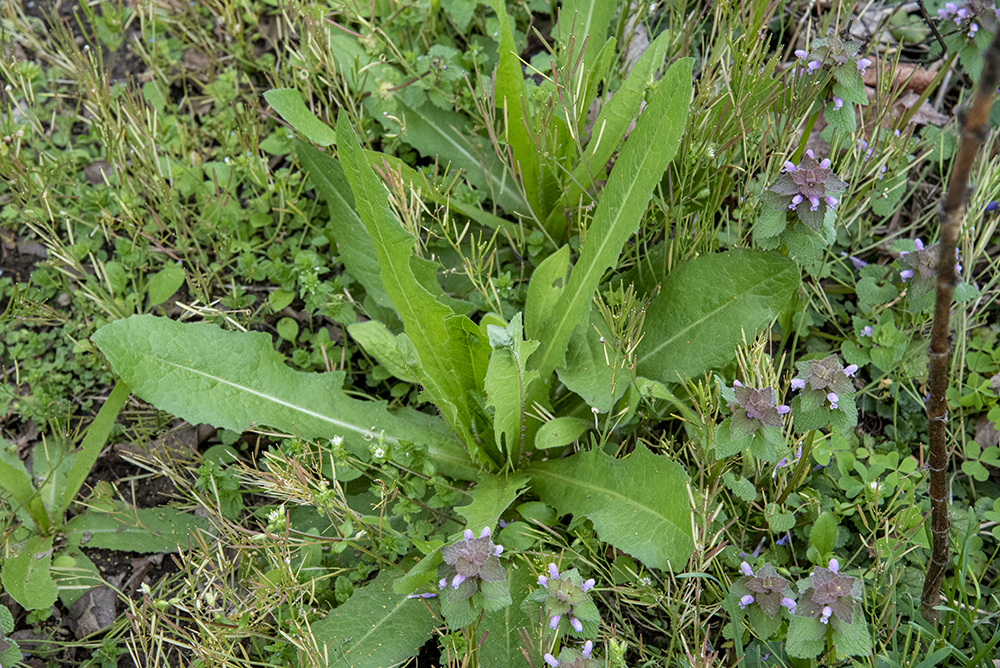
Wild lettuce (Lactuca canadensis)
When scratched, this plant releases a milky substance called Lactucarium that has similar effects as opium. It has been used throughout history to treat anxiety, breathing issues, poor sleep and joint pain but doctors say more research needs to be done before it can be safely used. That figures for something so common.
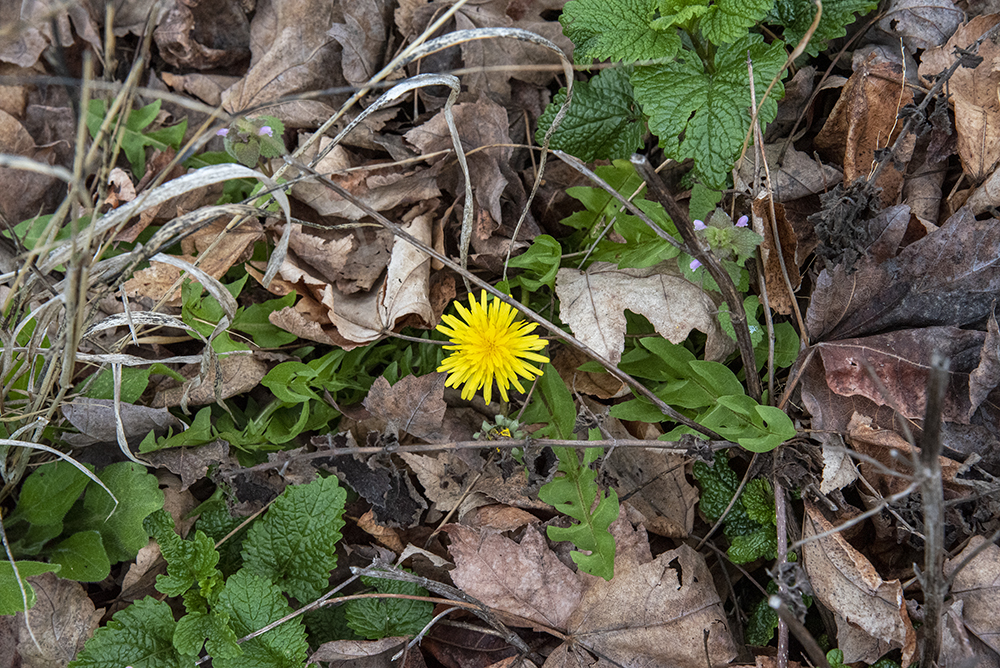
Dandelion (Taraxacum officinale)
Flowers, leaves and roots are edible. Interestingly, flowers are supposedly good in pancakes and are high in Vitamins A and B12. Leaves supply potassium, vitamin A and C as well as sodium.

Chickweed (Stellaria media)
Delicious cooked or raw in salads. High in vitamins C, B and A as well as minerals. It has been used as an anti-inflammatory as well as for pain relief, digestive and intestinal support, skin treatment, kidney support and astringent.

Field garlic (Allium vineale Linnaeus)
All parts are edible and to me at least, are the essence of spring.
Now that I’ve done my research, it’s time to start eating. Stay safe and happy foraging!
Sources:
Hairy Bittercress – Edible, Nutritious and Delicious!
Henbit: Pictures, Flowers, Leaves and Identification | Lamium amplexicaule
Purple Deadnettle: Pictures, Flowers, Leaves and Identification | Lamium purpureum
Edible Weeds – Plant Identification
Mock Strawberry : A Disdained Common Edible
Wild Lettuce (Lactuca canadensis)
